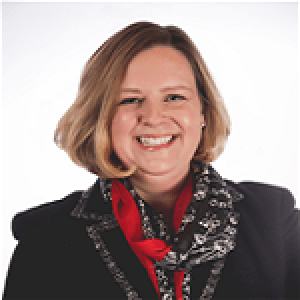
In every place I’ve worked, I’ve noticed two crucial keys to success: a bold but focused strategic plan and a strong, dynamic team culture. Without equal parts of both, it is hard for me to see a successful path forward.
I probably sound like a broken record, repeatedly telling Alliance staff, volunteer leaders, and the field that we will not succeed without focusing relentlessly on both strategy and culture. From time to time, we will need to deliberately and proactively make tough tradeoff decisions to make the best use of our limited resources. This is true for AAM just as it’s true in your home museums.
At the 2017 AAM Annual Meeting, I spoke at length about our strategic plan and about the tremendous progress we’ve made as an organization and together as a field.
Skip over related stories to continue reading articleIt’s been a bit longer since I shared with you how AAM is progressing on our own culture and work, though I hope that you have felt and seen some of the effects. On this Labs site one year ago, I outlined my vision of a great organizational culture and how AAM is adapting, changing, and innovating. I shared our values and organizational constitution, as well as what was changing and why.
We write about many of our experiments, struggles and successes, with the hope that other institutions can learn from AAM. And we want to learn from you – embracing change together, continually getting better, adapting to new and emerging priorities in our field and communities.
After months of study, reflection, and analysis, AAM is making some important internal changes. I expect the changes, driven by our strategic plan, to further strengthen our approach and result in better services and resources for you and the broad museum field.
We have heard from you that the Alliance tends to move too slowly, especially as our field and our world is moving faster than ever before. And while our strategic plan provides a clear roadmap for focusing our work and resources around several key topics, it is difficult to stop doing or start new things that don’t necessarily move us forward in those areas.
Looking in the mirror, we realized that our structure is part of the challenge, as well as our well-intentioned ambitions to address every issue confronting the field today. We must regularly ask ourselves the challenging question, “What do we stop doing?” to make room for new initiatives.
As a result of this realization, we are taking steps to reduce hierarchy, increase our nimbleness, and deliver higher quality services and resources. We are rethinking some of our programmatic approaches – and will focus on seeing through the work we’ve started before initiating new programs.
This approach involves some realignment of our resources and organizational structure. AAM is investing in new human resources and expertise, guided by our strategic plan. We are moving some current AAM staff into new roles to provide career growth opportunities for them and to take full advantage of their interests and skills. Unfortunately, our limited resources also required us to make the really hard decision to eliminate several positions. Saying goodbye to colleagues who have contributed immensely to AAM and to the field is incredibly difficult. These folks will always have the appreciation and admiration of the AAM family.
We will continue to focus deeply on museum excellence; diversity, equity, accessibility, and inclusion; leadership development; governance and trustees; advocacy on behalf of the cause of museums; and we will deepen our efforts in content strategies, membership benefits, and our communication efforts to the field.
As I travel the country through the end of the year, I look forward to sharing more about our cultural changes and strategic plan progress. And I am anxious to hear how you are making proactive, deliberate, and perhaps tough decisions so that our work together can drive the impact and mission of museums ever forward.









Comments